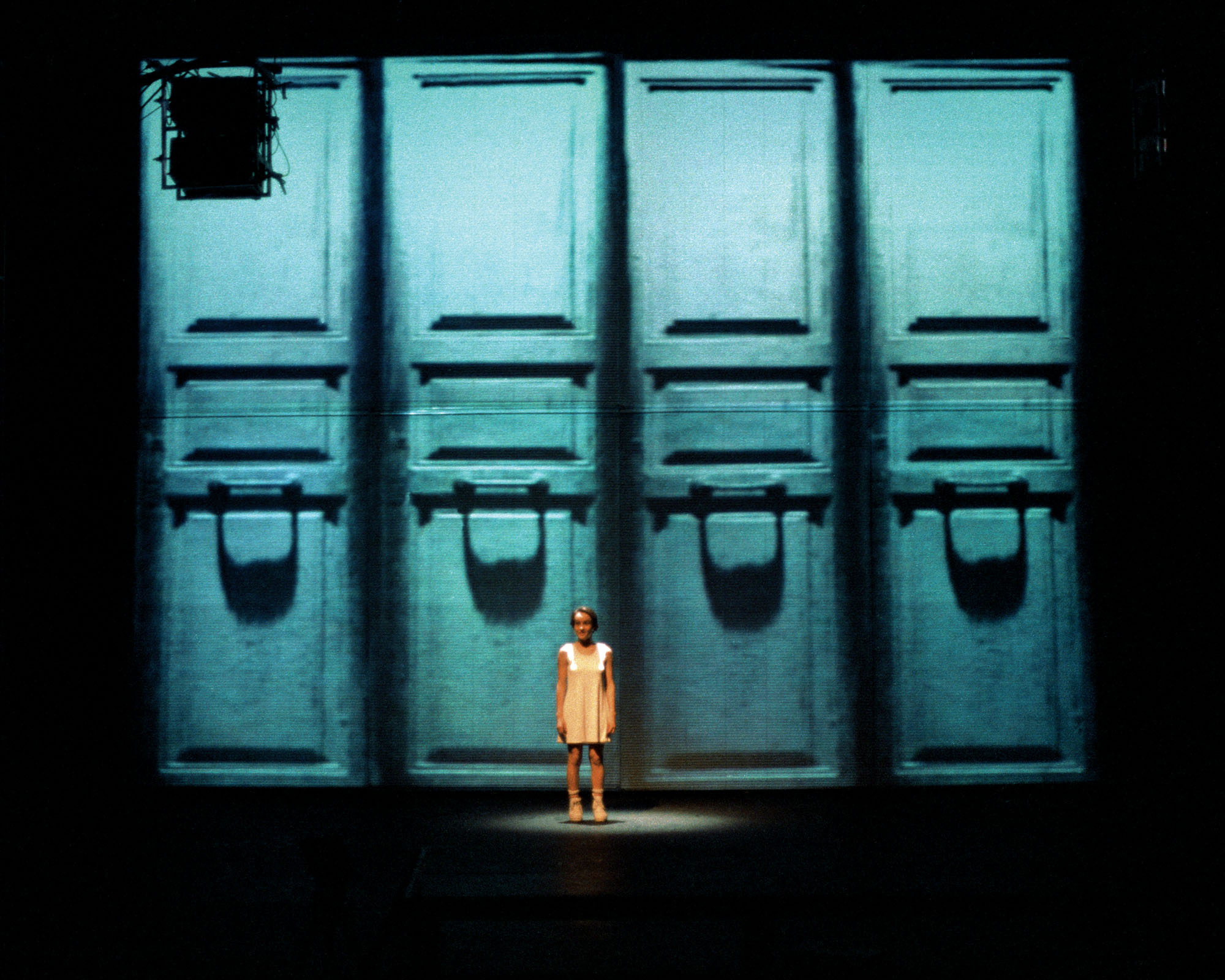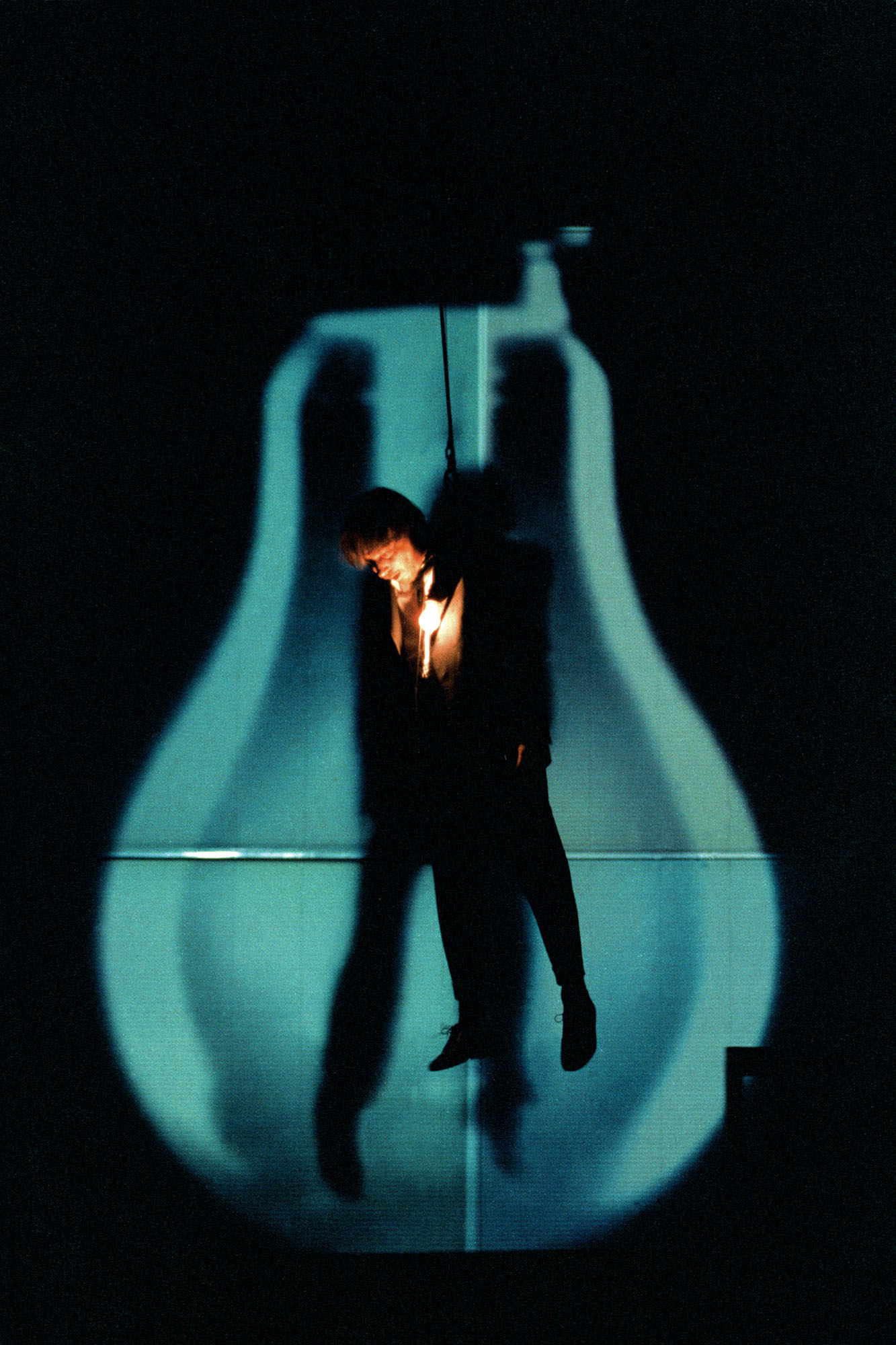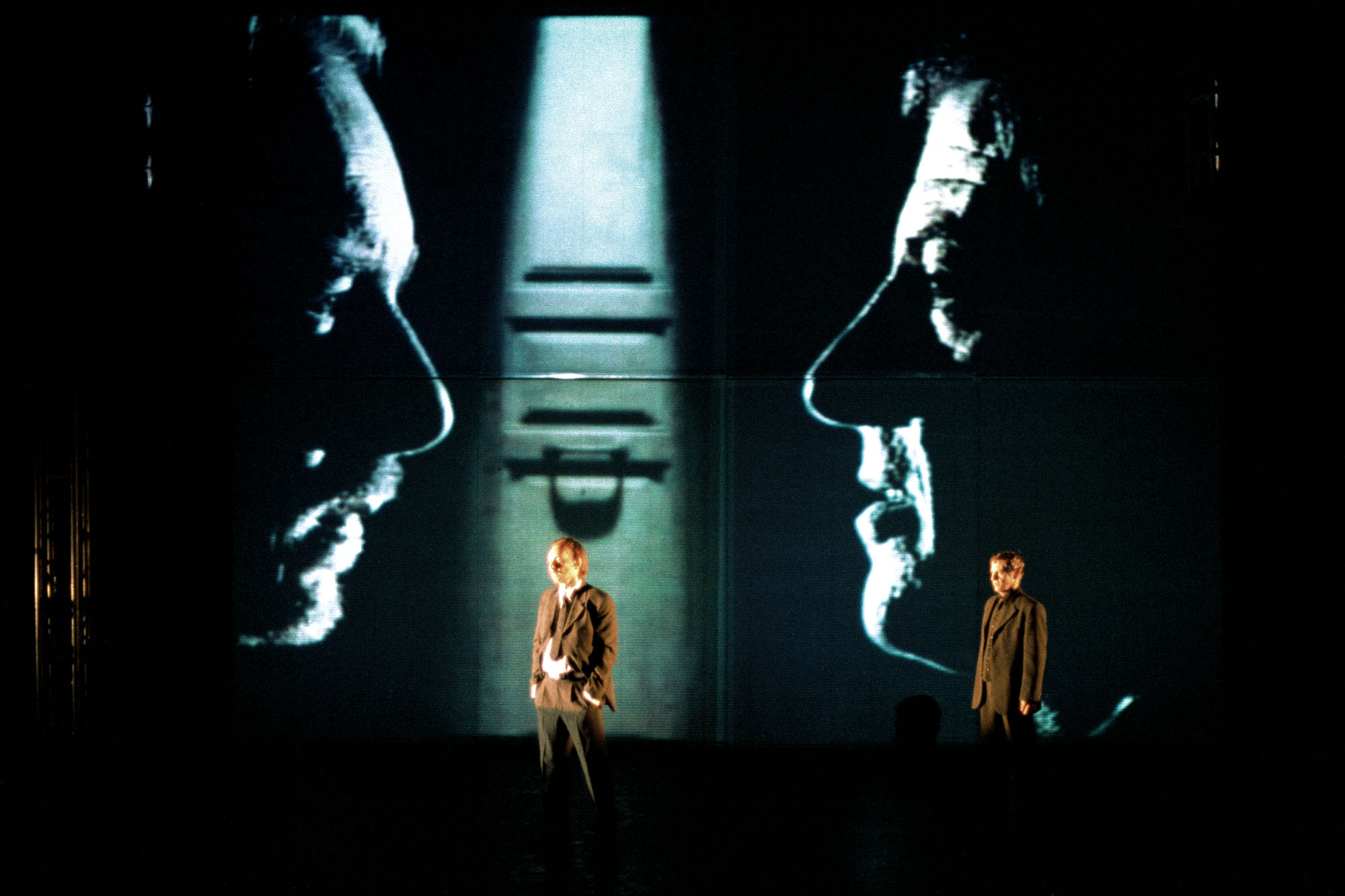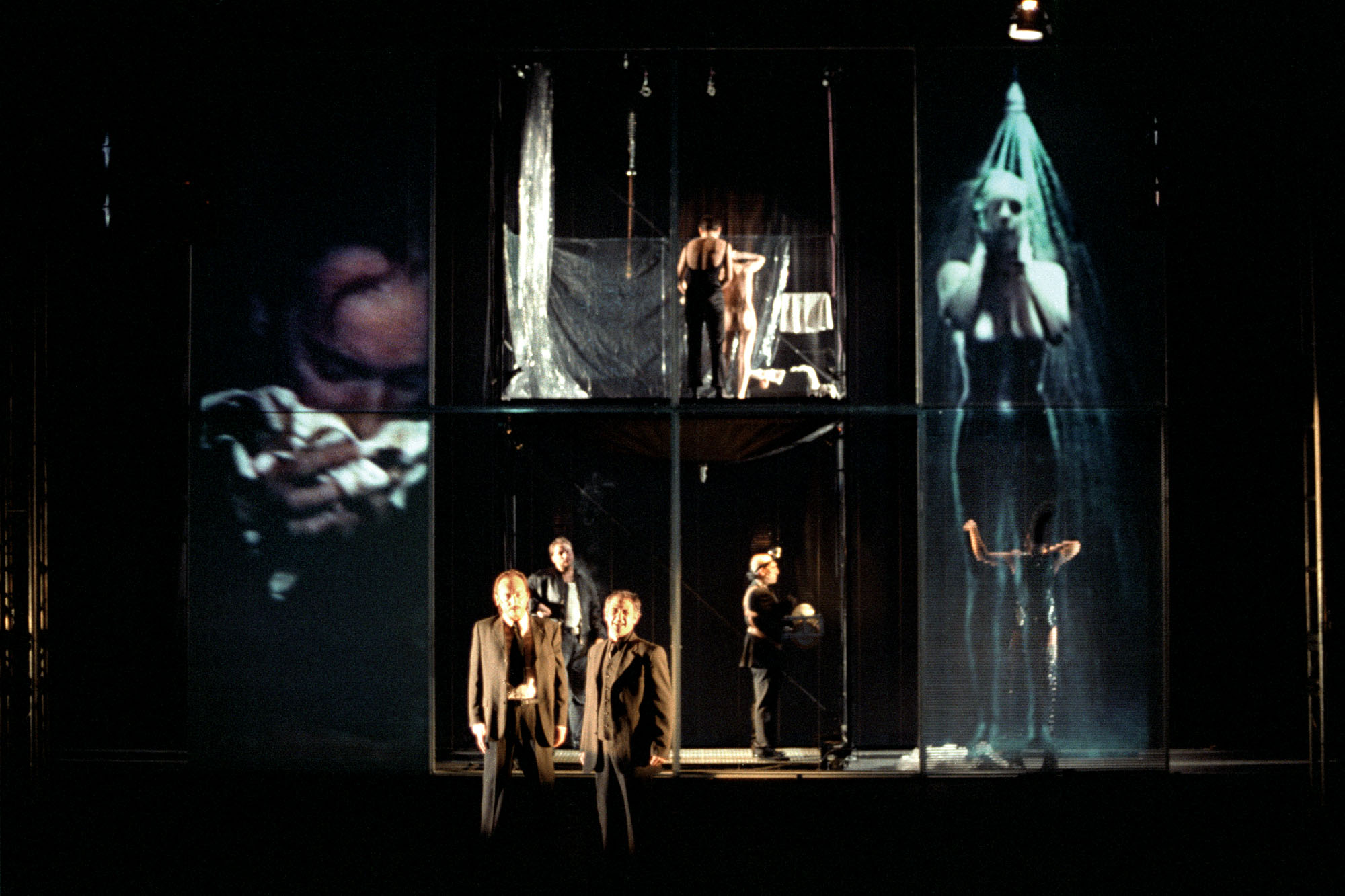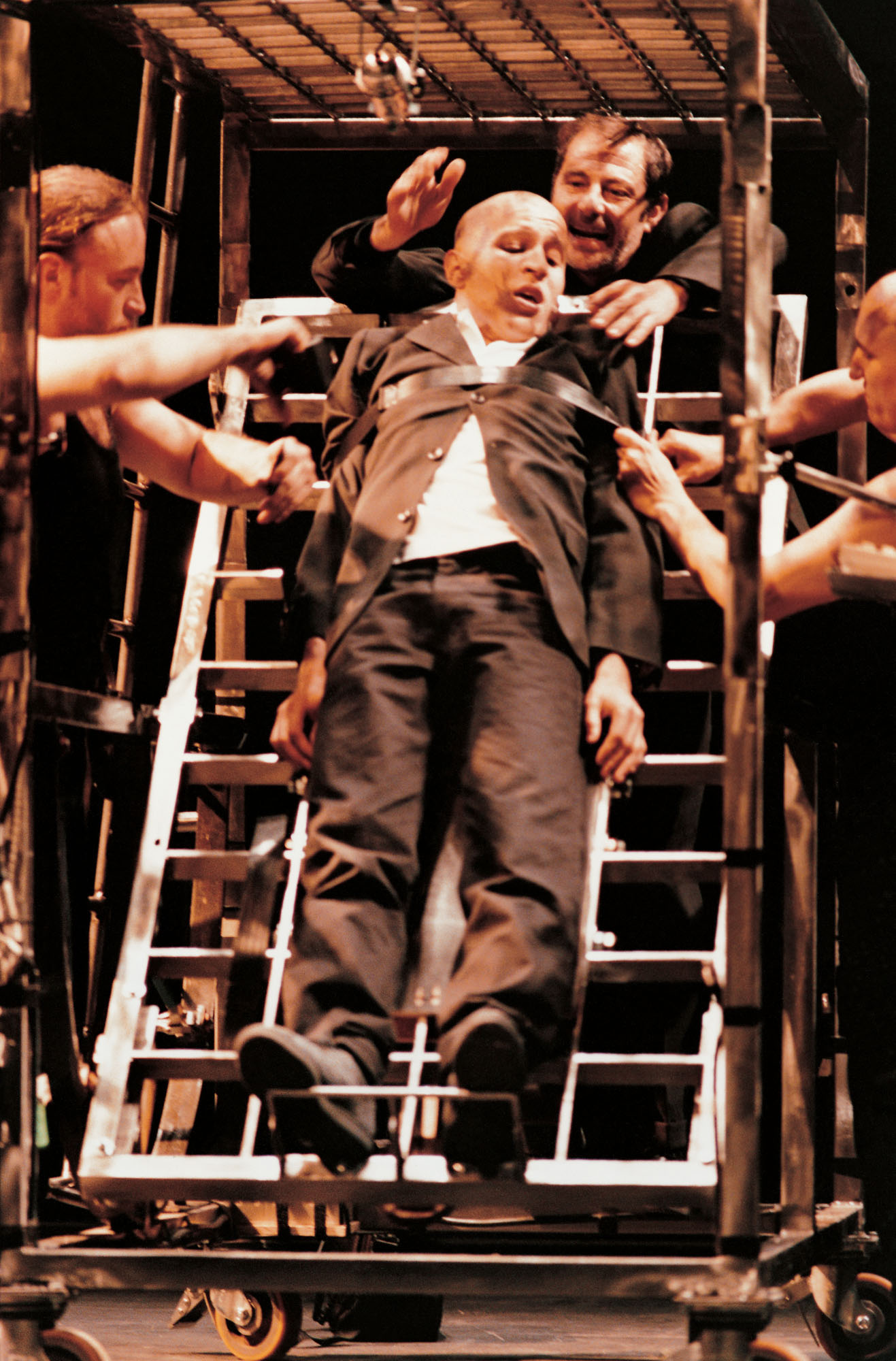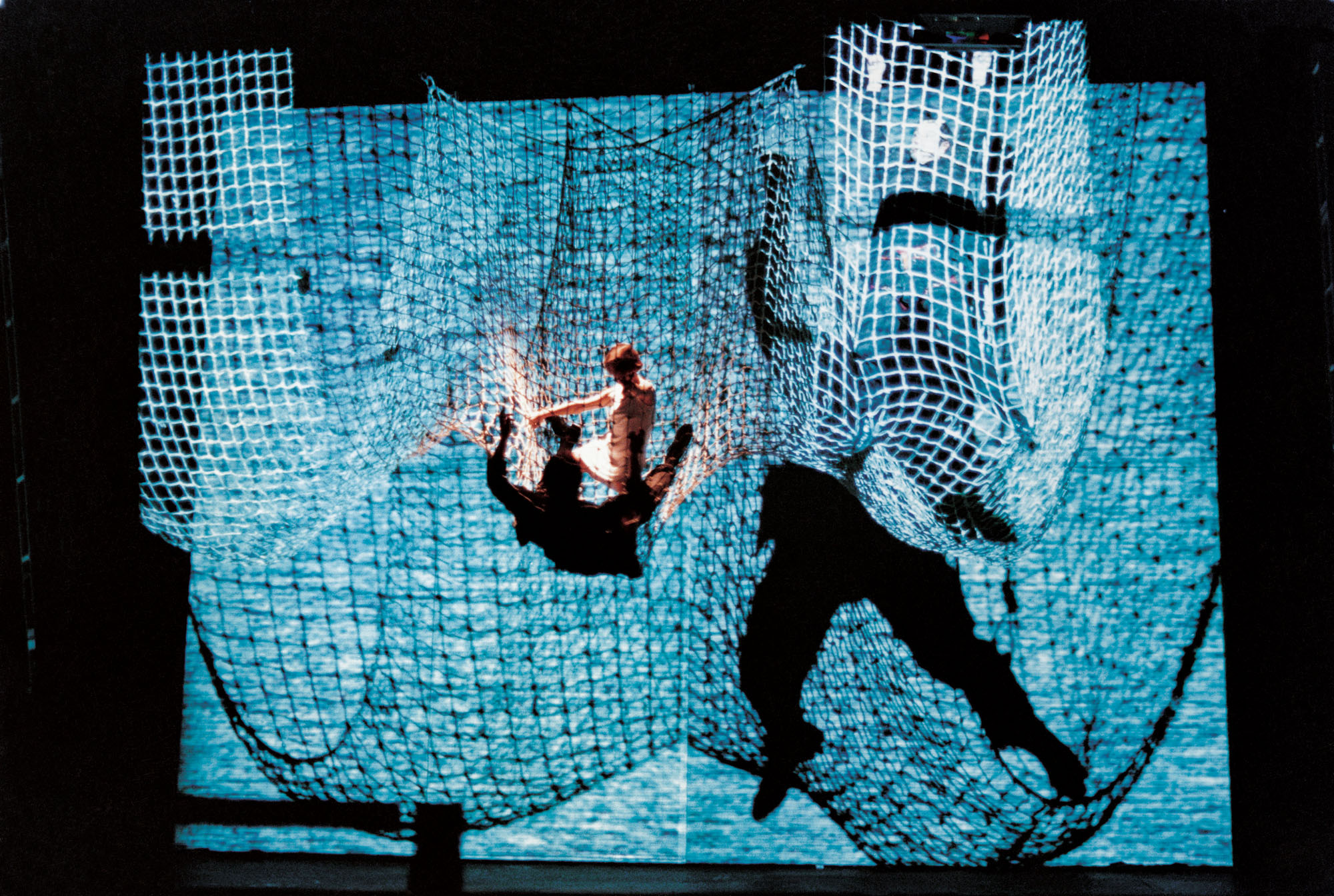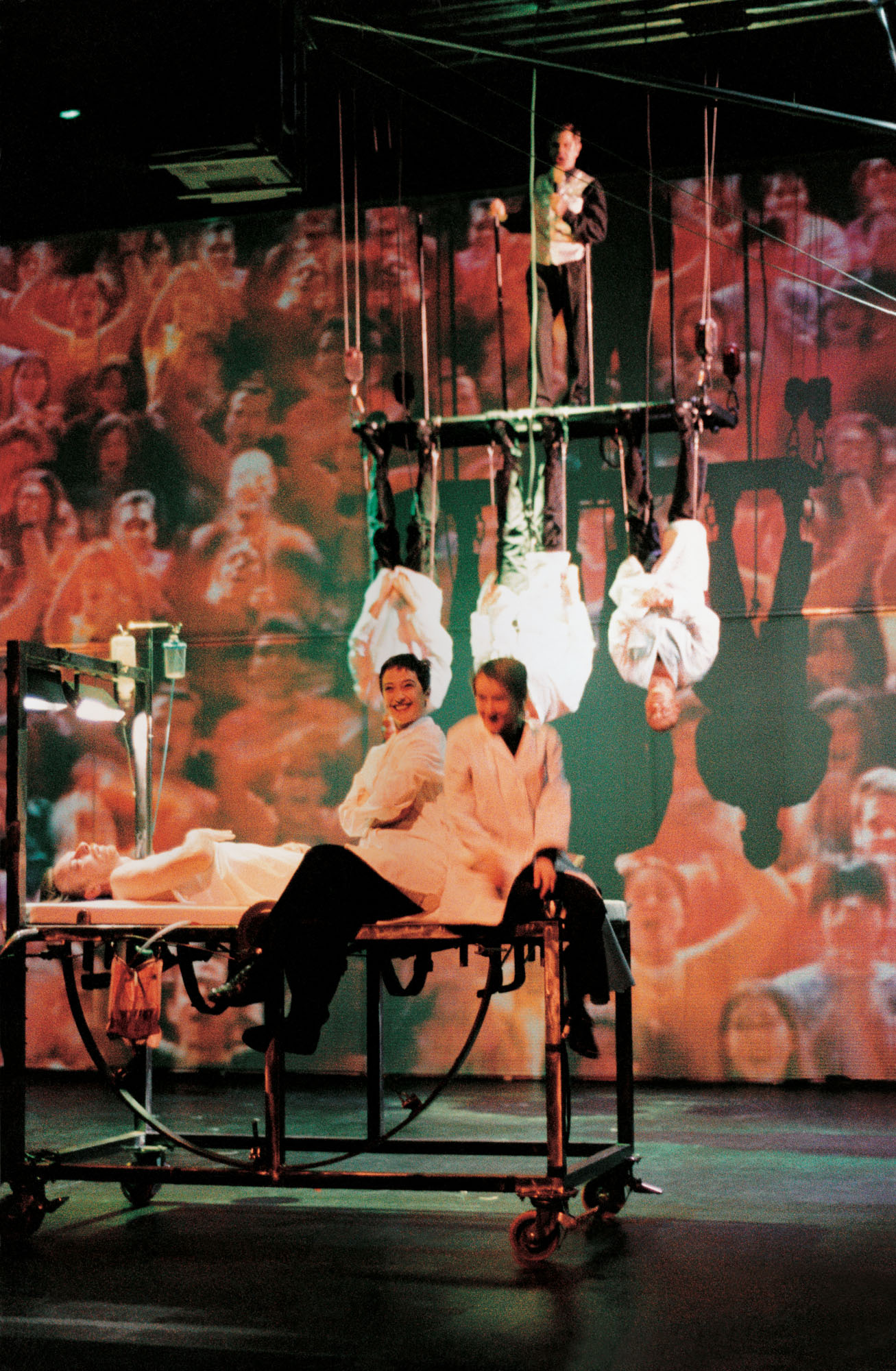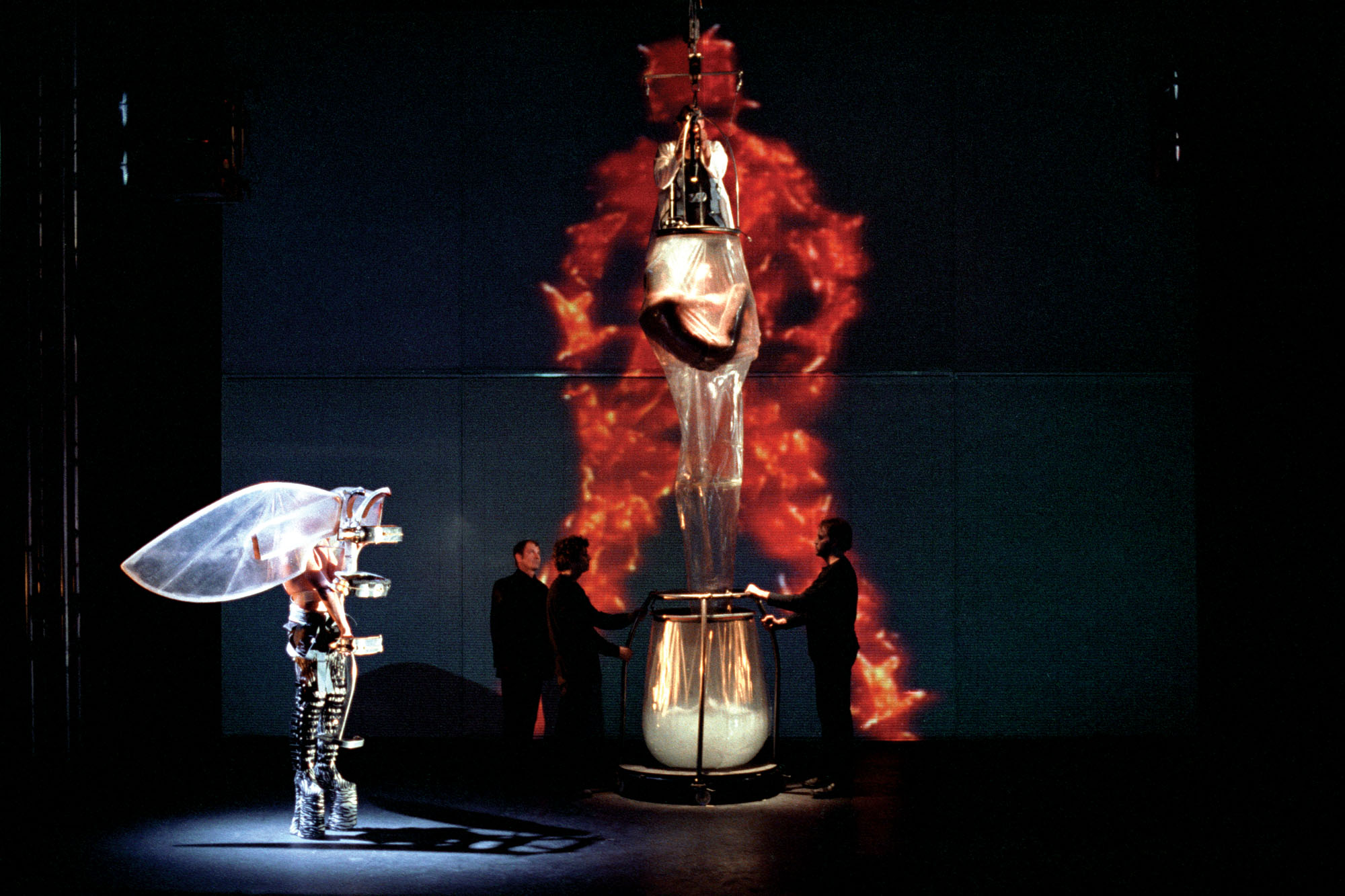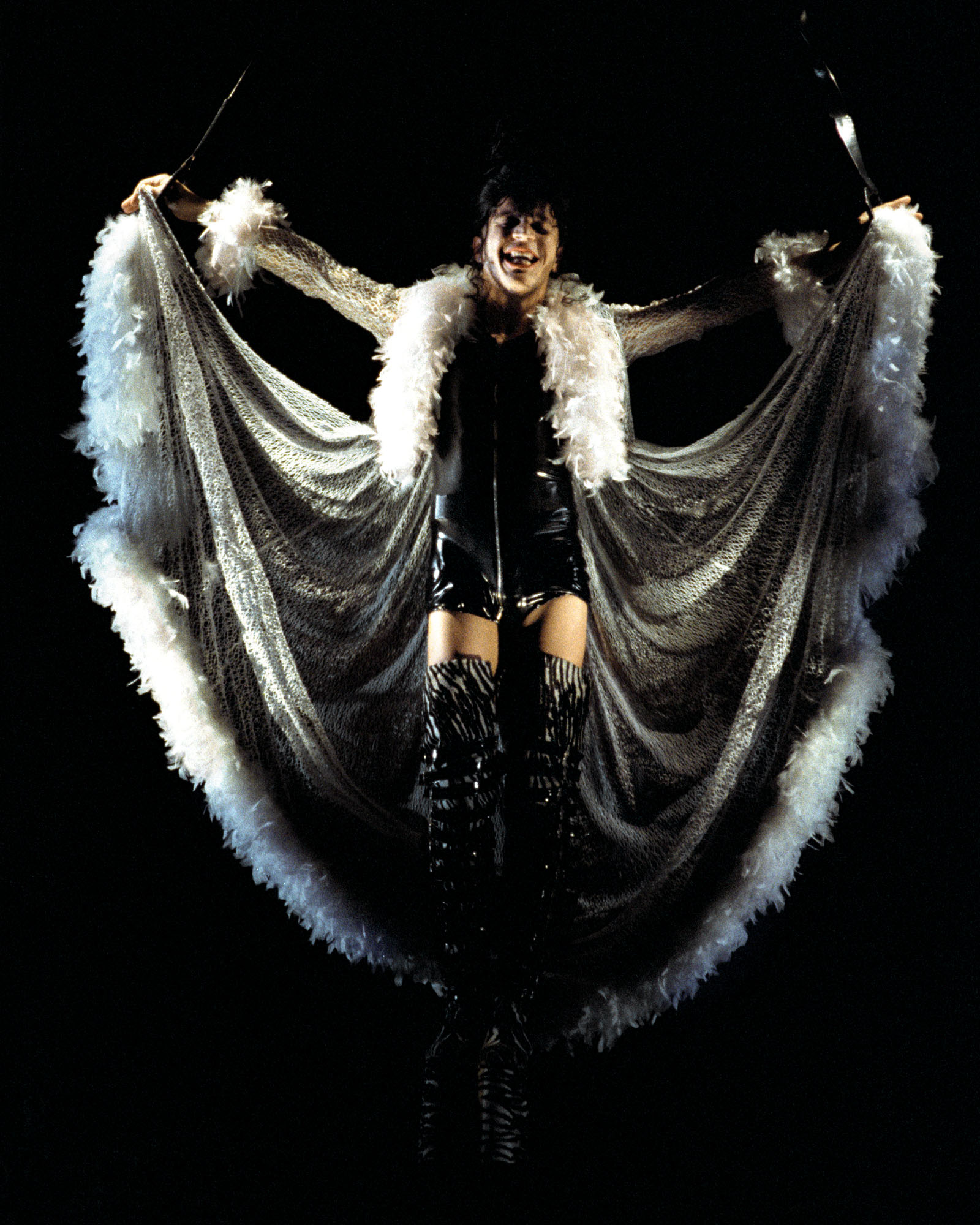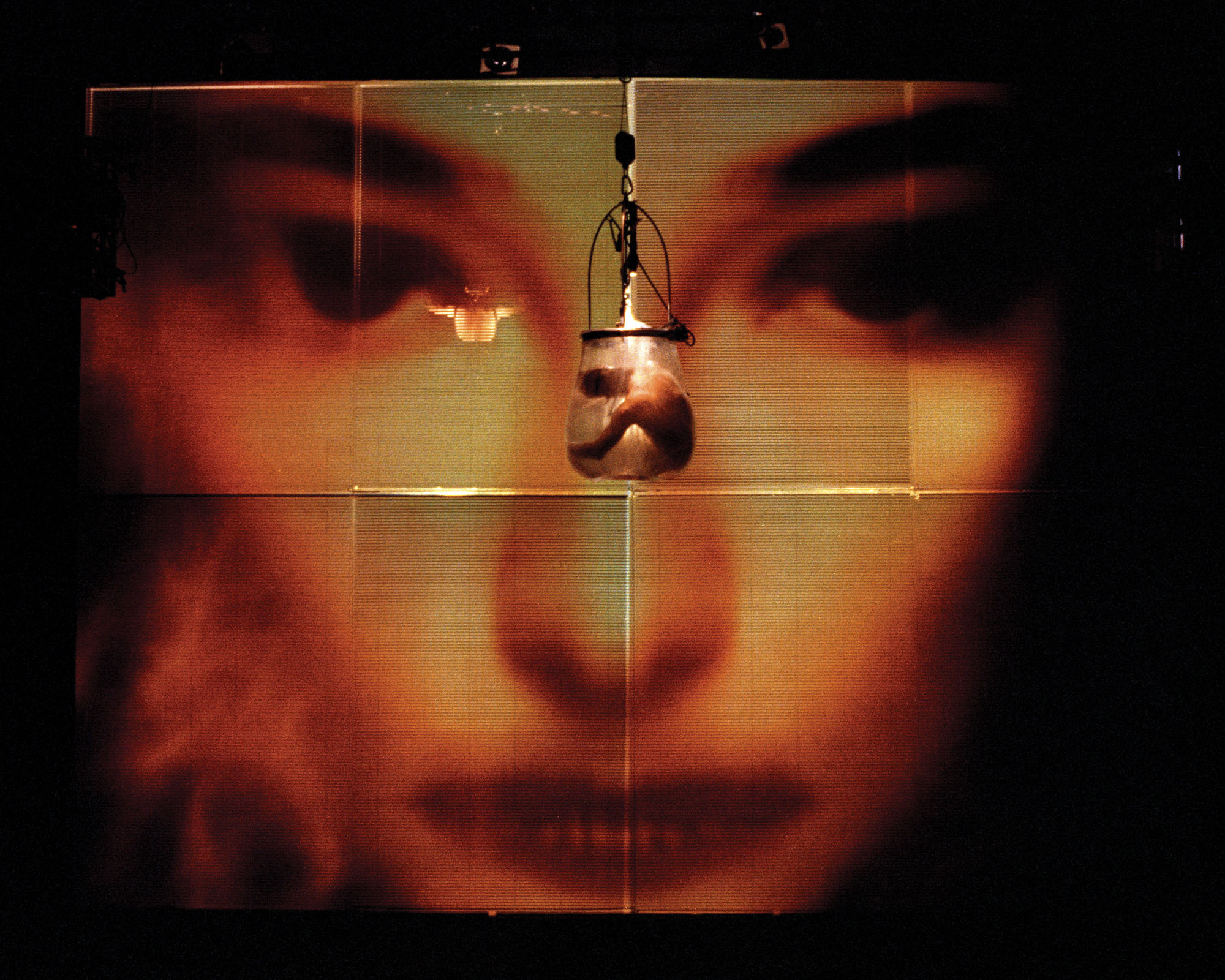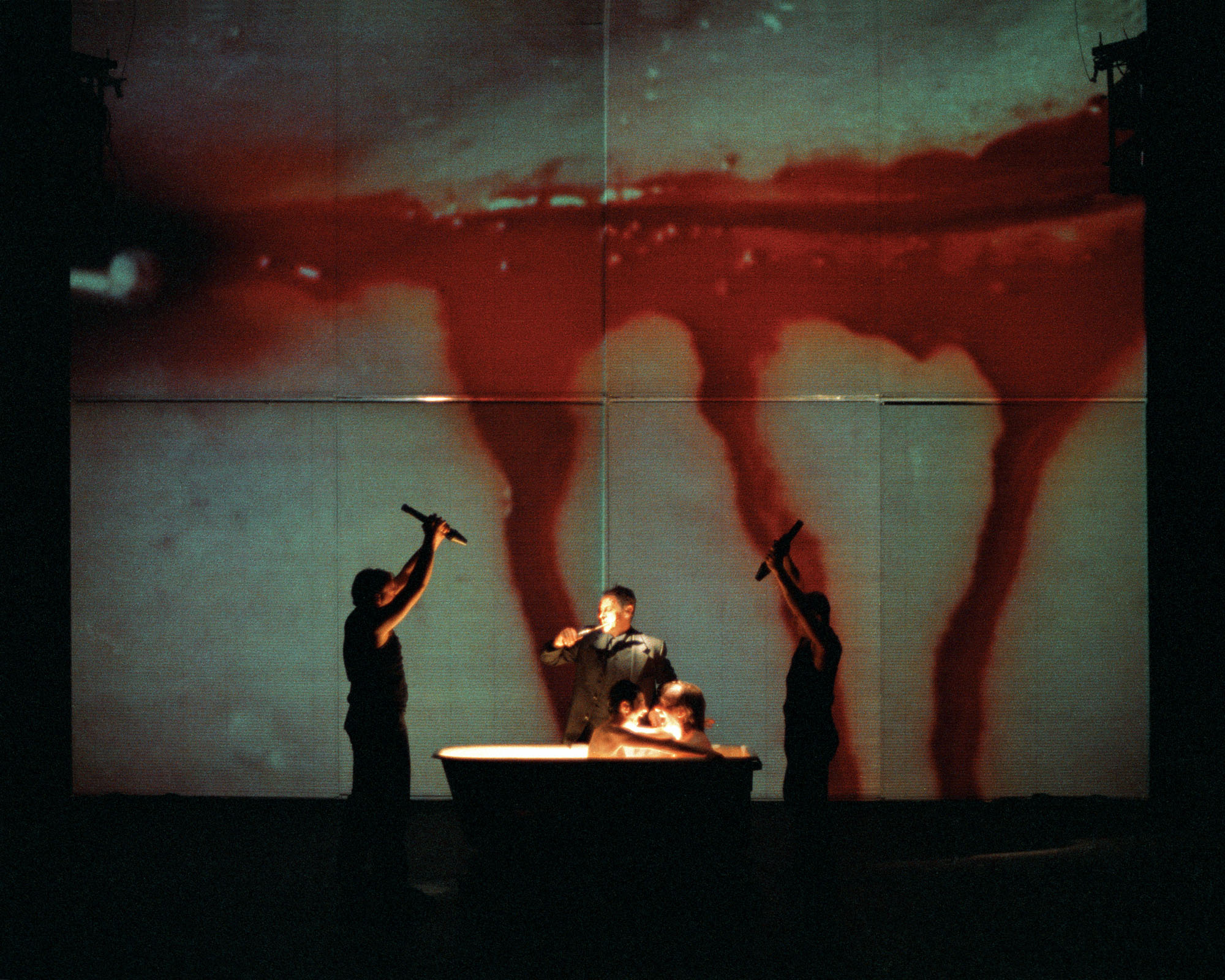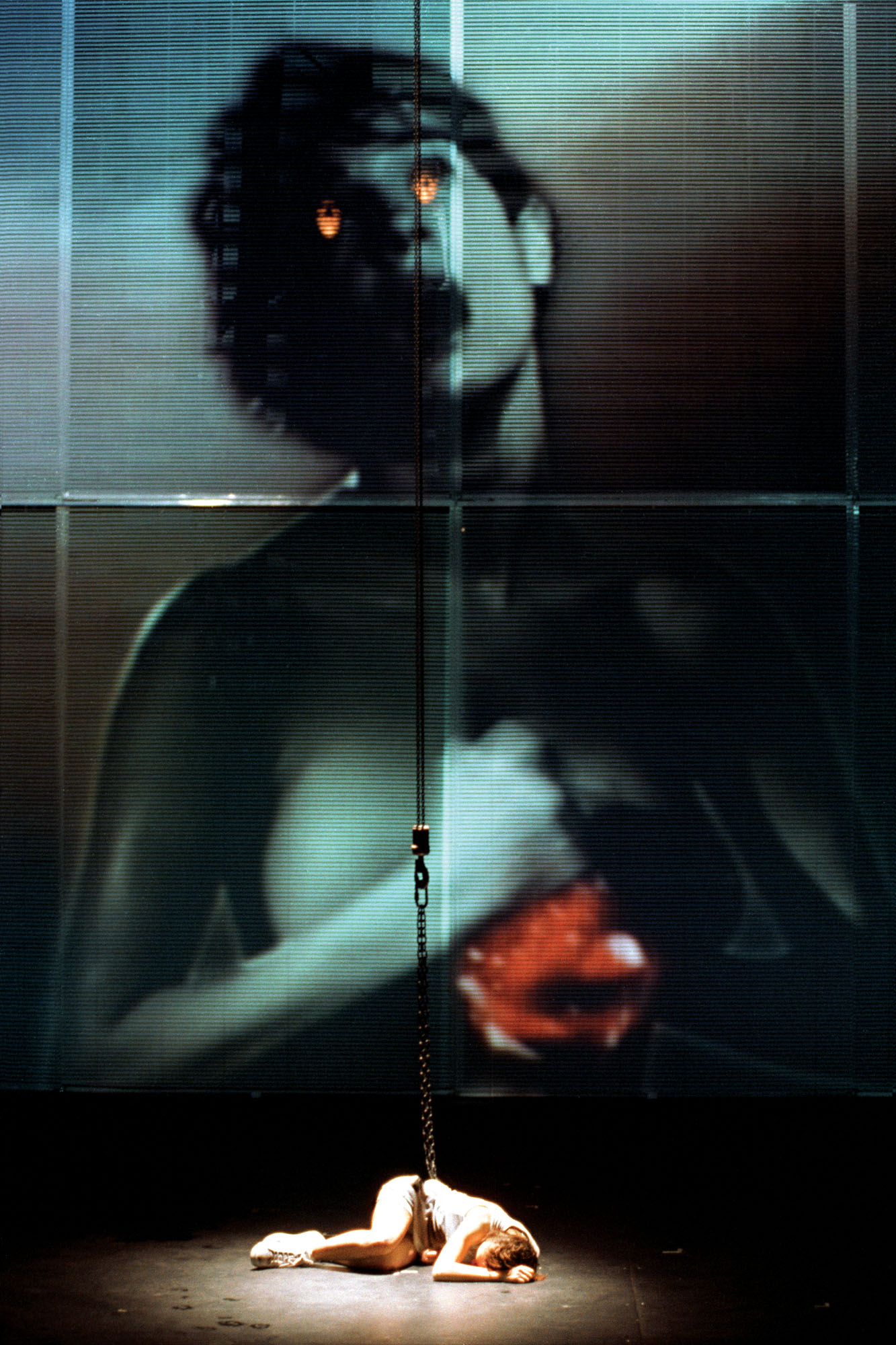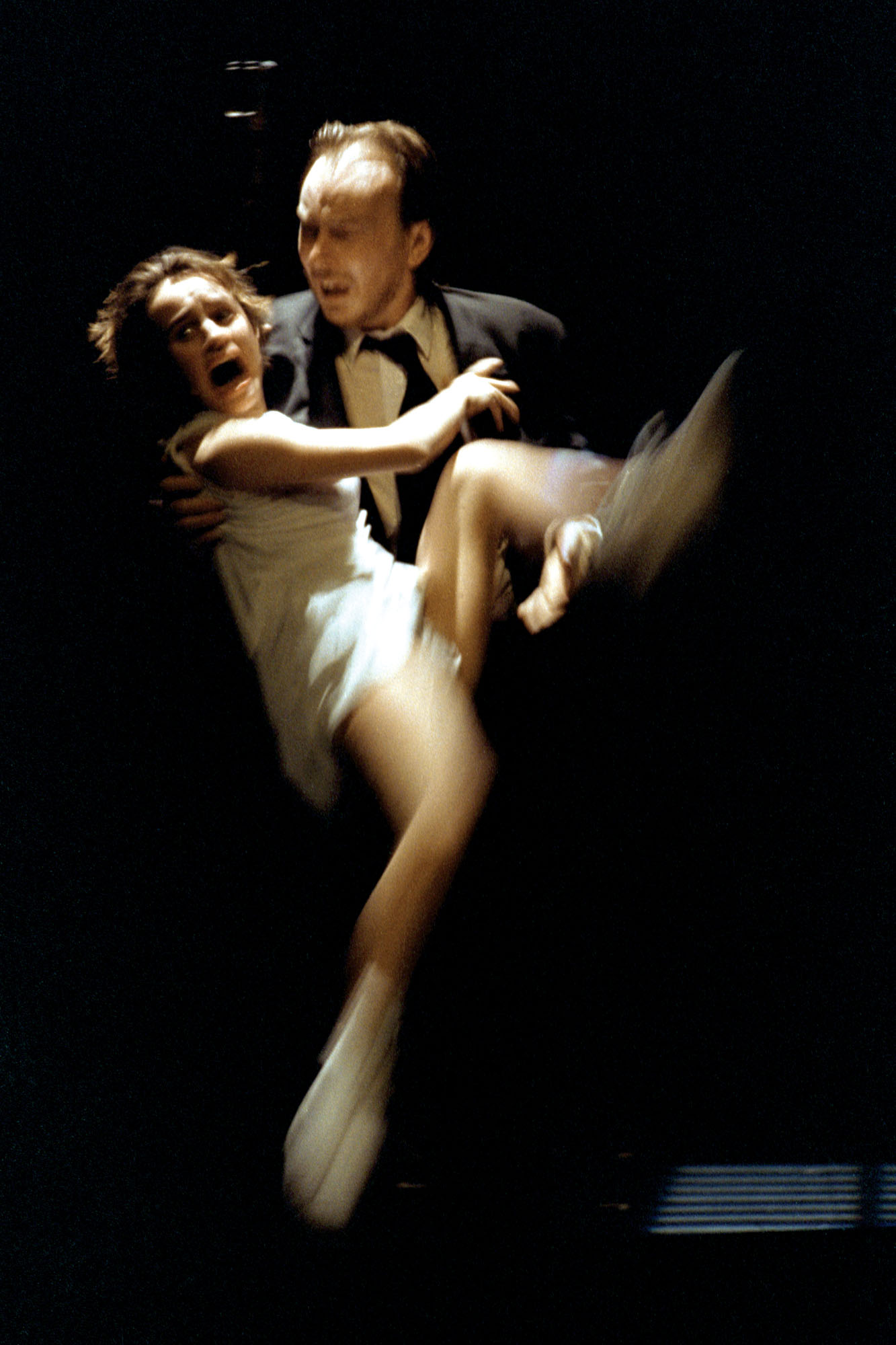Dirección escénica
Àlex Ollé, Carlos Padrissa (La Fura dels Baus).
Dramaturgia
Pablo Ley, Àlex Ollé, Carlos Padrissa, Magda Puyo.
Colaboración especial
Jaume Plensa
Dirección de actores
Magda Puyo
Textos
Pablo Ley
Creación y realización vídeo
Franc Aleu, Emmanuel Carlier.
Diseño de vestuario
Jaume Plensa
Diseño escenografía
Roland Olbeter
Creación musical
Big Toxic, Àlex Martín.
Realización técnica
Carles Bertolín, Alberto Pastor.
Diseño de iluminación
Albert Faura
Diseño de sonido
Marc Sardà
Diseño técnico de vídeo
Jordi Casinos
Diseño de software
Sergi Jordà
Actores
Younes Bachir-Lafritz, Carles Figols, Miquel Gelabert, Andrés Herrera, Anabel Moreno, Santi Pons, Jordi Puig, Sara Rosa, MerceRovira.
Discjockey
Jorge Flores, «Dr. Flo»
Producción
Directora de producción: Lina Valero.
Ayudante de producción: Mireia Romero.
Administración del proyecto: Anna Vinuesa.
Equipo técnico
Road manager: Lourdes Español, Carole Groia.
Jefe técnico: Susana Jové, Ramón Tetas.
Regidores: Andrés Herrera, Cristina Sánchez, Joan Náger.
Vestuario: Toni Allende.
Atrezzo: Alberto Pastor, Juan B.Torres.
Maquinista: Carles Bertolín, Pulgui.
Técnico de vídeo: Xavi Correa.
Técnico de iluminación: Dani Santamaría.
Técnico de sonido: Roc Mateu, Marc Romagosa.
F@ust Music On Line
Creación: La Fura dels Baus, Sergi Jordà.
Dirección: Carlos Padrissa (La Fura dels Baus).
Diseño, creación y desarrollo de software: Sergi Jordà.
Gestión Web y Software Web: Microgénesis S.A.
Diseño infográfico: Franc Aleu.
Escenografía de máscaras: Roland Olbeter.
Ayudante de producción: Mireia Romero.
F@ust Music On Line es un proyecto patrocinado por Fundación Autor y Sociedad General de Autores y Editores.
Estreno
28/4/98, en el Teatre Nacional de Catalunya, Barcelona.
Representaciones
254
Un espectáculo producido por Weimar 1999 Cultural Capital of Europe, Teatre Nacional de Catalunya y Centro Dramático Nacional; con el patrocinio de Freixenet, Mercedes Benz, Pabellón de España – Expo 98 Lisboa.
